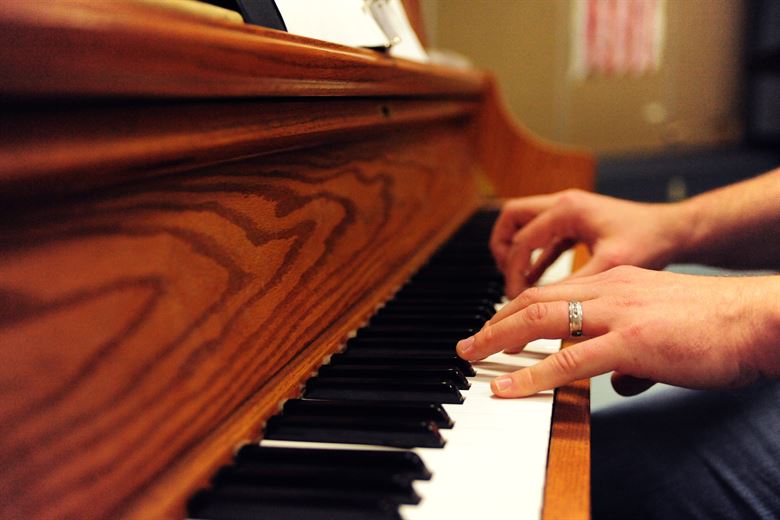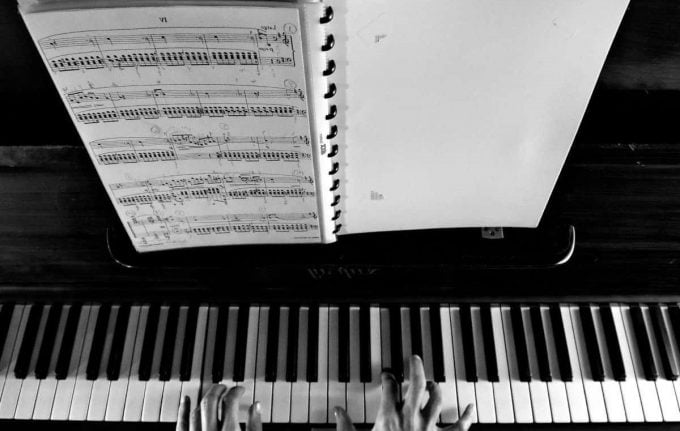I believe in giving my students a wide-ranging piano lesson experience. I don’t expect expertise in every area, but I do want to give them an opportunity to explore every area of piano and music. One of those diverse skills that I’m passionate about including in lessons is learning lead sheets.

So, why are lead sheets important? Lead sheets are a vital ingredient in my studio not only for their own sake (although it’s good for students to know how to read from lead sheets) but also for all the other skills and concepts that they help to teach.
Lead Sheet Concepts
I believe in teaching music theory through playing as much as possible and lead sheets provide wonderful fodder for this.
Harmony and Melody
One thing that working with lead sheets makes clear is the relationship between harmony and melody.
When playing fully-notated music, it’s easy to overlook or gloss over how the music is constructed. With lead sheets, you are constructing the music yourself and so you have no choice but to understand how the harmony and melody fit together.
Common Chord Progressions
We can do chord analysis when reading from sheet music, and I believe we should be doing plenty of this once students reach a certain level. In lead sheets, though, the chord analysis is already done for you so it’s easy to see the chord patterns repeating themselves without understanding SATB writing.

Fully understanding common chord progressions can help increase students’ reading abilities. It can also help them to relate better to classical repertoire since you can discuss and hunt for the familiar chord patterns from pop within the music of Mozart and Beethoven.
Psst…Want more ideas for teaching chords? Visit the “Chords” section of my Music Theory page for the latest and greatest!
Lead Sheet Skills
It’s not all about the theory, of course. Helping your piano students acquire lots of technical skills that they can apply to their fully-notated pieces is another reason why learning lead sheets is important for them.
Lead Sheets Teach Chord Proficiency
Students will need some basic knowledge of chords before approaching a lead sheet. But there’s a big difference between knowing the pattern of semitones (half steps) in a major chord theoretically, and actually being able to come up with chord shapes quickly.

To gain that proficiency of chord playing you can absolutely do some chord drills, like I do with my chord level challenges, but for many students that will only take you so far. By using lead sheets you can speed up that chord acquisition because they can use the chords to play their favourite pop songs. And they’ll probably be much more likely to practice those than any chord drill. 😉
Lead Sheets Teach Accompaniment Patterns
Lead sheets provide a fantastic opportunity to explore common patterns and left-hand styles. You can introduce Alberti bass, waltz patterns, chord inversions and so much more by using a lead sheet as your template.
Once your students have these patterns in their fingers, it will be so much easier for them to sight-read them too. Win, win!
Lead Sheets Teach Listening Skills
We’ve all had students who start playing and immediately shut off their ears. They get to the end of a piece and you ask them about certain details and it’s like they weren’t even in the room for their own performance. 🤔
Lead sheets are a great opportunity to develop students’ listening skills and wake up their ears. There’s less info on the page which give students the opportunity to focus more on the sound. Listening is also a natural part of the lead sheet playing process as we need to test different variations and patterns to see which we like best.
Do you teach lead sheet playing to your students?
Why do you do it? What benefits have you seen in your studio? I’d love to hear about your experiences teaching lead sheets in the comments below.